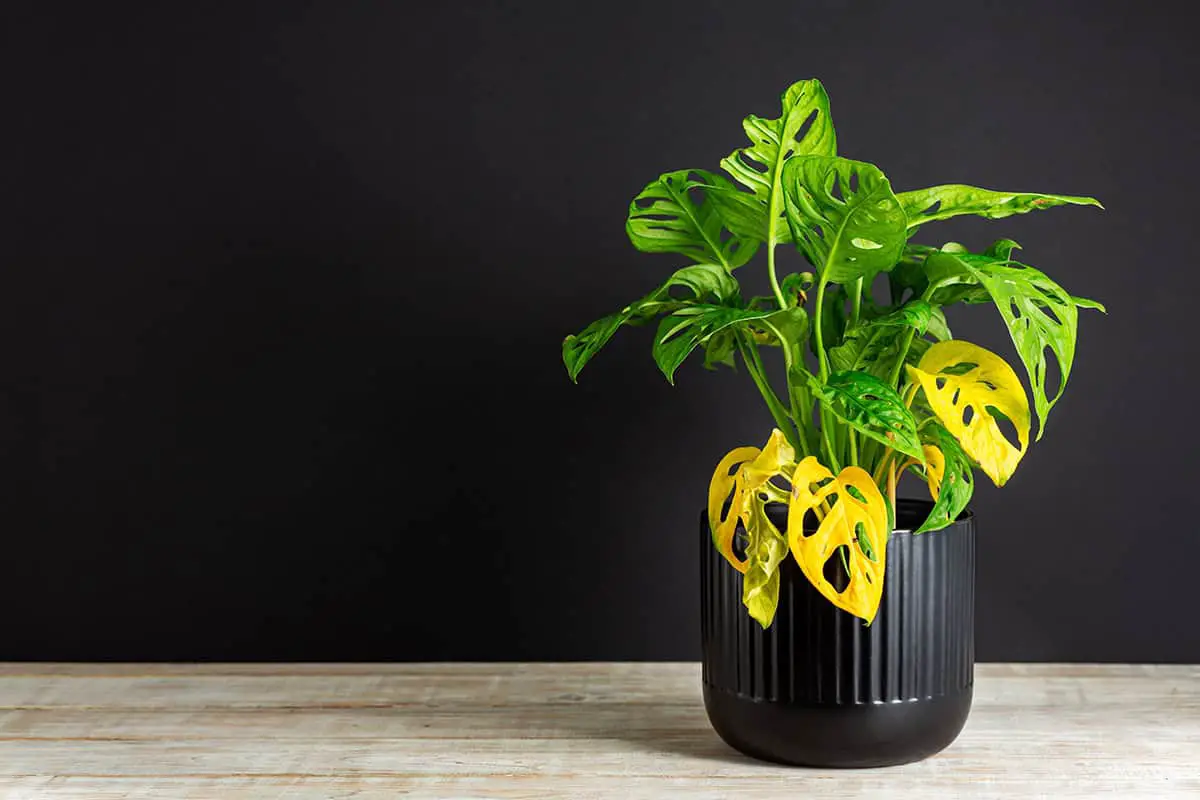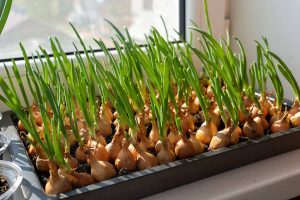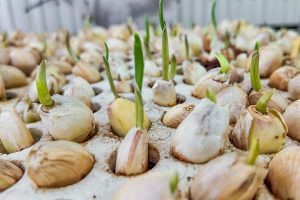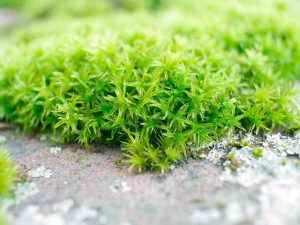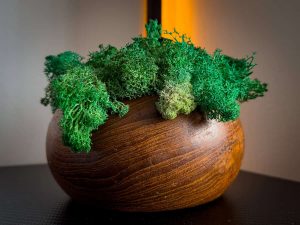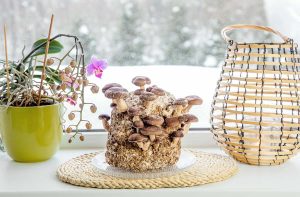You’ve proudly placed your new Monstera in the living room, but after a few weeks, its leaves are turning yellow and developing brown spots. Frustrated, you wonder what went wrong. Identifying and addressing common Monstera problems can help your plant thrive again. Here are common issues you may run into with your Monstera and how to overcome them.
Table of Contents
Yellowing Leaves
Yellow leaves on a Monstera can signal several issues. Chlorosis, or the yellowing of leaf tissue, often indicates nutrient deficiencies. The most common deficiencies are nitrogen, magnesium, or iron. Without these nutrients, the leaves lose their chlorophyll, leading to yellowing.
Common Causes for Yellowing Leaves:
- Nutrient Deficiency: Iron chlorosis often starts as yellowing between veins. Meanwhile, magnesium deficiency can cause interveinal chlorosis, yellowing between veins but with veins staying green. Lastly, nitrogen deficiency affects the entire leaf.
- Overwatering: Excess water can suffocate the roots, causing yellowing. Ensure proper drainage and avoid leaving the plant in standing water.
- Underwatering: Drought stress can also lead to yellowing. Check the soil moisture regularly to keep it evenly moist.
- Poor Light Conditions: Insufficient light can stress the plant, causing yellowing. Place your Monstera in bright, indirect light for optimal growth.
- Pests: Insects like spider mites and thrips can cause leaves to yellow and drop. Inspect your plant regularly for signs of infestation.
Taking care of your Monstera includes providing balanced fertilizer during the growing season. Regularly check the plant for watering needs and adjust lighting as necessary.
Brown Leaf Tips
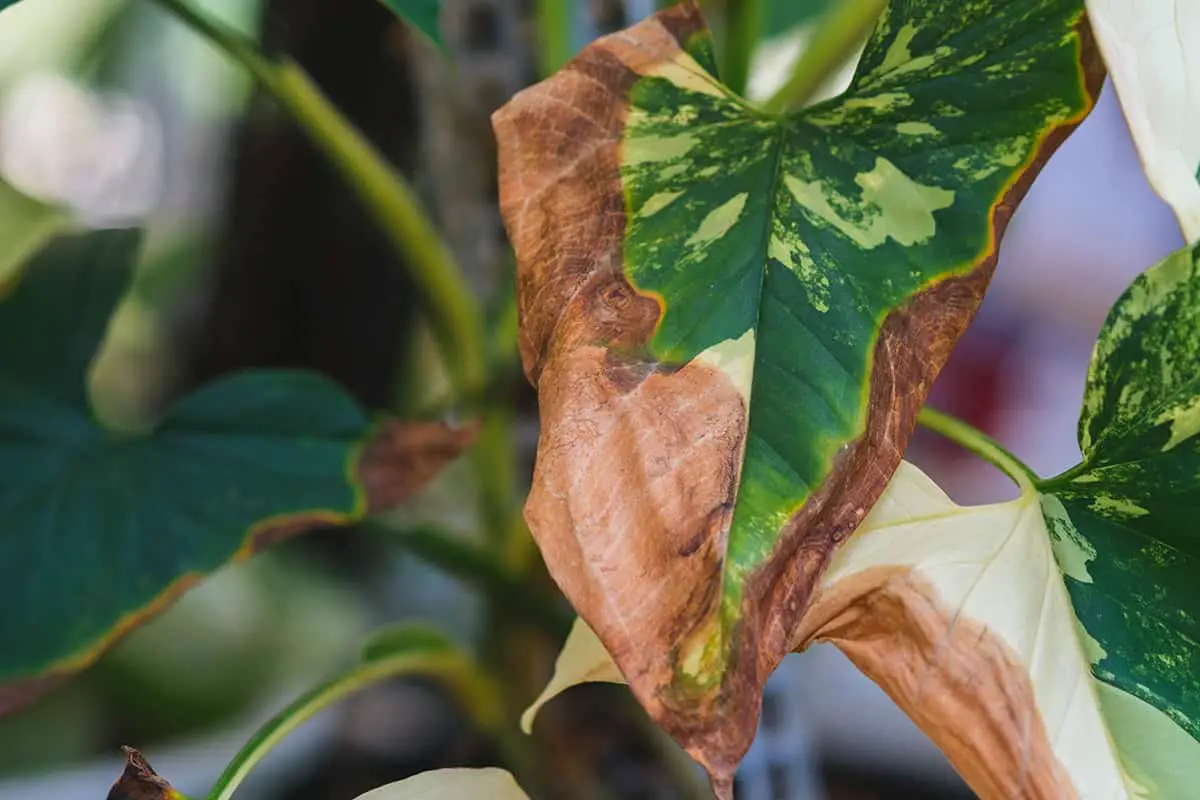
Brown leaf tips on your Monstera can result from several factors.
Overwatering is a common cause. Too much water can lead to root rot, which prevents the plant from absorbing nutrients. This can cause the tips to turn brown.
Underwatering can also be an issue. If your Monstera doesn’t get enough water, the leaf tips may dry out and turn brown.
Low Humidity is another factor. Monsteras prefer a humid environment. When the air is too dry, the leaf tips can become brown.
High levels of soluble salts in soil or water can cause brown tips. These salts can come from fertilizers or tap water with high mineral content.
To help your Monstera, ensure it has the right amount of water and humidity. Check soil moisture regularly and adjust watering frequency. If humidity is low, consider using a humidifier or misting the leaves.
If using tap water, let it sit overnight before watering. This allows some chemicals to evaporate, reducing the risk of brown tips.
Nutrient buildup from fertilizers can also cause issues. Adjust your fertilizing schedule and consider flushing the soil occasionally to remove excess salts.
Leaf Drop
Leaf drop is a common issue for Monstera plants. Several factors can cause this.
Watering plays a crucial role. Overwatering can lead to root rot, causing leaves to fall. Ensure the soil dries between waterings. Underwatering can also cause leaf drop.
Light is another factor. Monstera plants need indirect light. Too much direct sunlight or too little light can stress the plant, leading to leaf drop. Adjust the light exposure accordingly.
Temperature fluctuations can affect Monstera. Extreme cold or heat can shock the plant. Keep it in a stable environment, ideally between 65 to 85°F (18 to 29°C).
Humidity levels matter too. Monstera prefers high humidity. Low humidity can cause leaf drop. Increase humidity by misting the plant or using a humidifier.
Pest infestations can also lead to leaf drop. Inspect your plant regularly. Look for signs of pests like spider mites or mealybugs. Treat infestations promptly with appropriate insecticides.
Regularly check the soil and roots. A healthy Monstera should have firm roots and well-draining soil. Repot if necessary to ensure good drainage and space for growth.
Root Rot
Root rot is a common problem in Monstera plants. It often comes from overwatering. Too much water leads to an oxygen-poor environment. This creates a perfect habitat for fungi and bacteria.
The first signs are yellowing leaves and soft, mushy roots. This can spread quickly. It’s important to take action immediately. Root rot can be fatal to your Monstera if left untreated.
To prevent root rot, ensure proper drainage. Use well-draining soil and avoid watering too frequently. Also, check the soil’s moisture before watering again.
If your Monstera already has root rot, remove the affected roots. Trim them with sterilized scissors and repot the plant in fresh, well-draining soil. Then, keep it in a location with good air circulation.
Maintaining a healthy root system is crucial. Always monitor your watering habits, as root rot thrives in wet conditions.
Applying mulch can help. Mulch retains soil moisture and reduces weed problems next to the stem. Use a layer of 2 to 6 inches (5-15 cm) of mulch for best results.
Propagation can also be risky. A cutting with root rot may not survive. Healthy roots lead to new stem and leaf growth. Supplemental light might be needed in late fall or early winter.
Pest Infestations
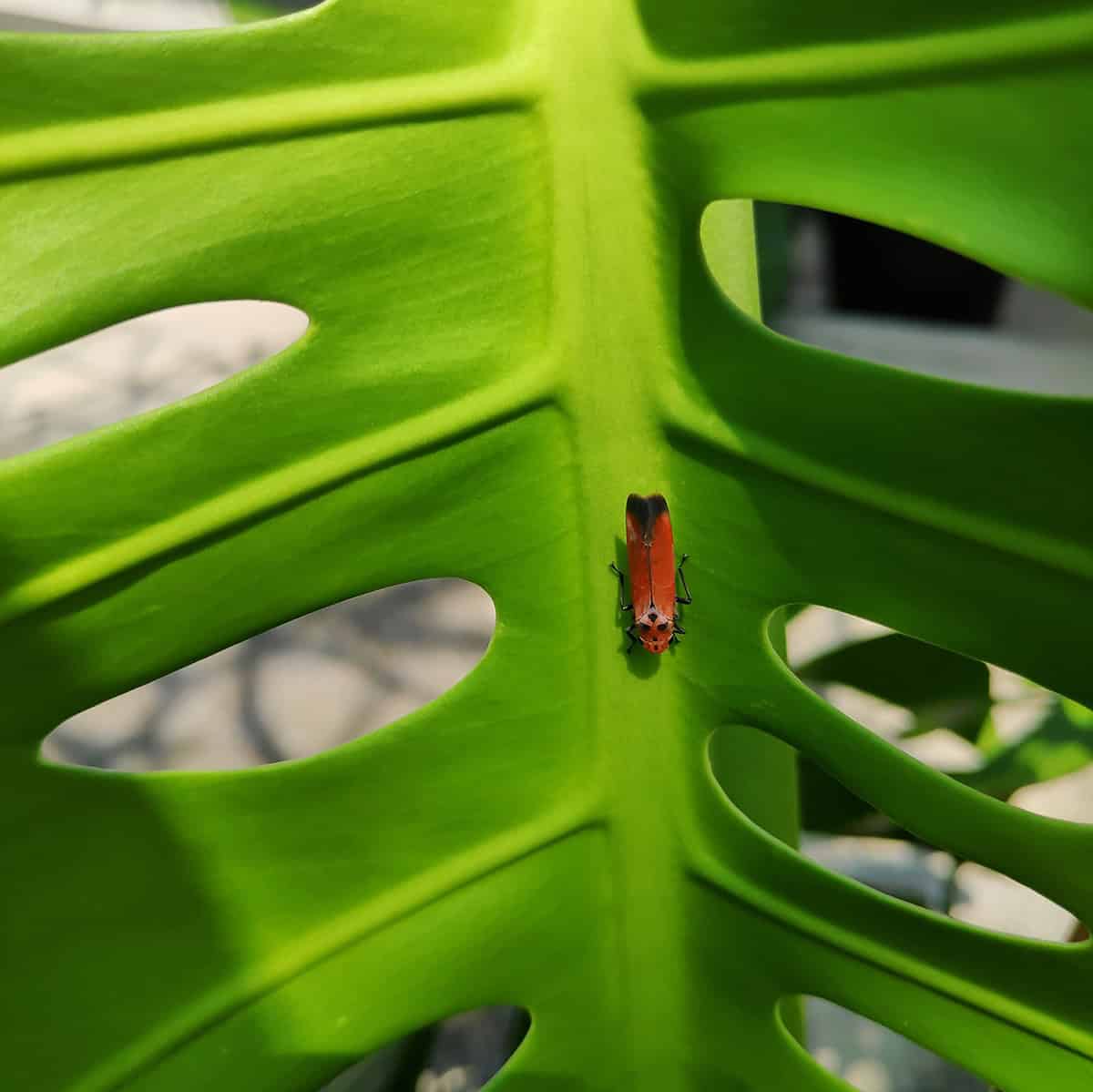
Monstera plants, like many houseplants, can fall prey to certain pests. The most common include spider mites and mealybugs. Both pests can cause visible damage to your monstera and should be managed promptly.
Spider Mites
Spider mites are tiny and often hard to see with the naked eye. They form thin, web-like structures on the underside of leaves. These pests suck the sap from plant cells, causing yellow or brown spots. If unchecked, they can lead to leaf drop.
To check for spider mites, look for small webs and speckles on your monstera’s leaves. Increase humidity around the plant, as spider mites thrive in dry conditions. Regularly misting your monstera can help deter them.
If your plant is infested, rinse the leaves with water. Use insecticidal soap, making sure to cover all parts of the plant. Reapply the treatment every few days until the pests are gone. For severe infestations, consider using a miticide.
Mealybugs
Mealybugs appear as white, cottony masses on your monstera. They gather in leaf axils, stems, and nodes. Mealybugs feed by inserting their long mouthparts into plant tissue, sucking out the sap. This can stunt growth and cause yellowing and leaf drop.
To identify mealybugs, look for the cotton-like clumps on the plant. Quarantine the affected monstera to prevent spread. Wipe the bugs away with cotton swabs dipped in alcohol. This breaks down their protective coating, effectively killing them.
For significant infestations, use insecticidal soap or neem oil. Apply the solution thoroughly, reaching all infected areas. Repeat the treatment weekly until you see no signs of the pests. Maintain a regular inspection routine to catch future issues early.
Slow or Stunted Growth
Slow or stunted growth in Monstera can occur for several reasons. Inadequate light is a common cause. Monstera prefers bright, indirect sunlight. If your plant isn’t getting enough light, its growth can slow down significantly.
Nutrient deficiencies also contribute to slow growth. Ensure your Monstera has enough nitrogen, phosphorus, and potassium. These nutrients are essential for healthy growth. Consider using a balanced liquid fertilizer every few weeks during the growing season.
Poor soil quality can stunt growth. Monstera thrives in rich, well-draining soil. Ensure your potting mix has good aeration and retains some moisture without becoming waterlogged. Adding perlite or orchid bark can improve soil structure.
Overwatering or underwatering can also affect growth. Monstera prefers slightly moist soil but not soggy. Overwatering can lead to root rot, while underwatering can cause the plant to dry out. Keep a consistent watering schedule to avoid these issues.
Temperature and humidity play a crucial role too. Monstera grows best in temperatures between 60-80°F (15-27°C). It also prefers high humidity levels. Use a humidifier or place a tray of water near the plant to maintain humidity.
Pests such as spider mites, mealybugs, and scale insects can hinder growth. Regularly inspect your Monstera for pests and treat infestations promptly with insecticidal soap or neem oil.
Leggy Growth
Leggy growth in Monstera plants is common. It happens when the plant stretches towards light, resulting in long, slender stems with fewer leaves.
To prevent leggy growth, provide enough light. Monstera plants need bright, indirect light. Place your plant near a window but not in direct sun.
Pruning helps control leggy growth. Trim back the longer stems to encourage more compact growth.
Using a support like a stake or a pole can also help. It keeps the plant upright and promotes healthy growth. Support also mimics the plant’s natural climbing behavior.
Reposition the plant regularly to ensure even light distribution. Rotate the plant every few weeks to prevent lopsided growth.
Check for rootbound conditions as well. Monstera needs space to grow, so repot if roots are overcrowded. Use a larger pot to give the roots room to expand.
Fertilize regularly, as nutrient deficiencies can also cause weak growth. Use a balanced, water-soluble fertilizer every month and adjust according to the season.
Leggy growth can also be a sign of pests, so inspect your plant regularly and treat any infestations promptly with gentle, non-toxic treatments.
Leaf Curling
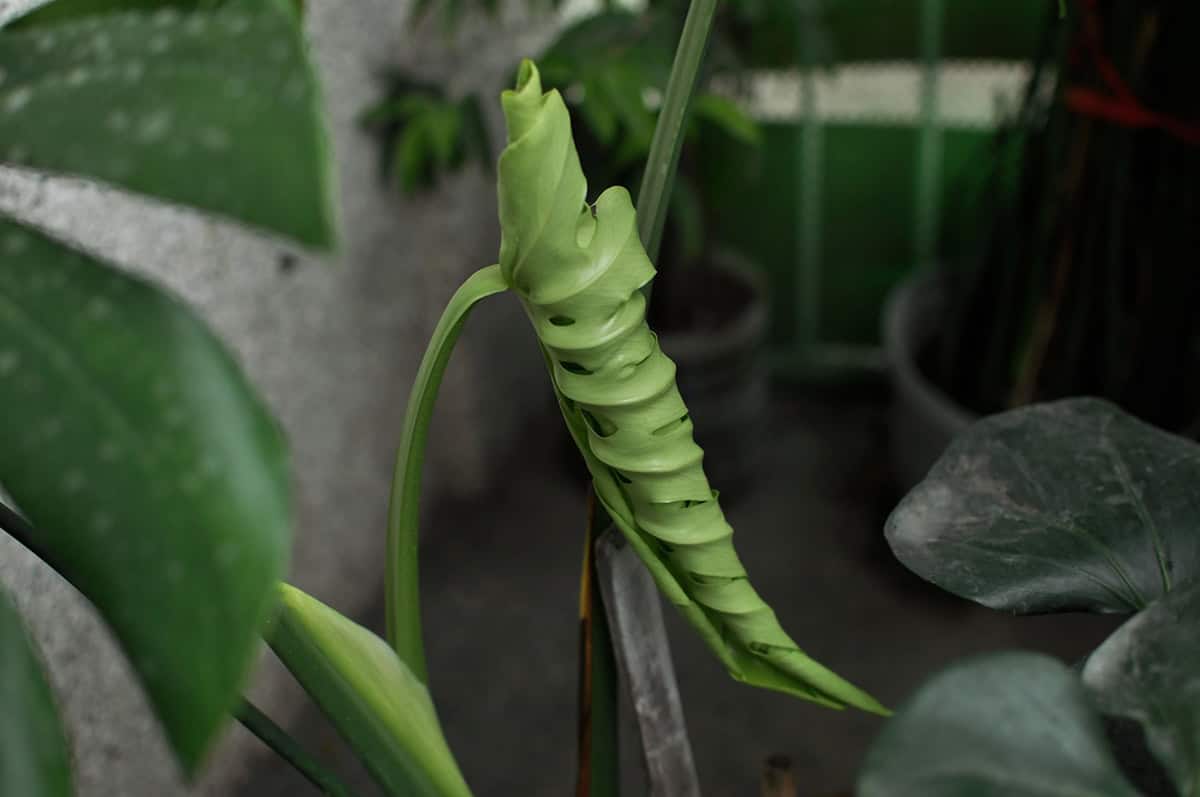
Leaf curling in Monstera can trouble plant owners. Several factors can cause this issue. Overwatering is a common reason. Too much water can lead to root rot. This, in turn, affects the leaves, making them curl. Ensure your pot has proper drainage.
Underwatering is another possible cause. When Monstera does not receive enough water, its leaves may curl. Check if the soil feels dry. Water your plant thoroughly, and make sure water reaches the roots.
Another factor to consider is humidity. Monstera plants thrive in high humidity. If the air is too dry, leaves can curl. Misting your plant and using a humidifier can help.
Temperature stress also plays a role. Extreme temperatures, whether too hot or too cold, can cause leaf curling. Keep your Monstera in a stable environment, and aim for consistent temperatures.
Pests like spider mites or aphids can lead to leaf curling. Inspect your plant regularly. Look for small insects or webbing. If you find pests, treat them promptly with insecticidal soap.
Lastly, nutrient deficiencies can cause leaf curling. Ensure your Monstera is receiving balanced nutrition. Use a high-quality, balanced fertilizer, and follow the instructions for application carefully.
Sunburn
Monstera plants can suffer from sunburn when exposed to too much direct sunlight. The primary sign is brown spots appearing on the leaves.
Brown Spots from Too Much Direct Sunlight
When a Monstera is in direct sunlight for extended periods, it can develop brown spots on its leaves. This condition, known as leaf scorch, results from the breakdown of chlorophyll.
You’ll notice pale or bleached areas forming first. These areas then turn brown and brittle. If you see these symptoms, it’s best to move your plant to indirect light.
Regularly check the light exposure. Use sheer curtains to filter harsh rays if necessary. Ensure the plant gets bright, indirect light to prevent further sunburn damage. Adjusting light conditions promptly helps the Monstera recover and maintain healthy foliage.
Overwatering
Overwatering your monstera can cause serious issues. It may lead to root rot, which can harm your plant. You must be vigilant about watering habits to avoid these problems.
Signs of overwatering include yellowing leaves, wilting, and moldy soil. Your plant may also develop black, mushy roots, which indicate root rot. These symptoms can be detrimental if not addressed swiftly.
To prevent overwatering, you should water deeply but infrequently. Allow the soil to dry out partially before the next watering. This approach helps reduce the chance of root rot and other diseases. Avoid the common mistake of watering on a strict schedule; check the soil moisture first.
Make sure your monstera is in a pot with drainage holes. Good drainage allows excess water to escape, preventing the roots from sitting in water. Poor drainage can exacerbate overwatering problems, making your plant more susceptible to diseases.
Remember, watering early in the morning is generally best. It allows the soil to dry during the day, reducing the risk of fungal infections.
Monitor the environment around your monstera. Excess moisture from driveways or roofs can lead to overwatering, especially in outdoor settings.
